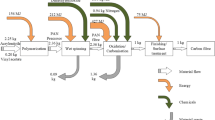Abstract
The present study deals with the design life variation of axle housings with experimental investigations. The detailed failure analysis has been carried out on the influence of various manufacturing process. It is found that significant results are achieved due to surface finish improvements. Life of axle housing at design stage is estimated using road surface roughness value and indoor bending test method. The conditions of road roughness are varied drastically due to the terrain in which vehicle operates. The estimation of dynamic forces acting on axle for a typical terrain is extremely difficult, so actual strain values were measured at suspension mounting zones in the axle assembly for various road roughness and payload conditions. Similarly, component level estimation is calculated for indoor bench test conditions. Life estimates using design intended surface roughness and tensile strength measured at raw material in plate condition does not reveal any failure. But premature failure of the actual component during experimental testing occurred, which does not match to design calculations. Failure investigation at the cracked zone reveals manufacturing processes have altered the fatigue characteristic of housing plate. The key influencing factor is the surface finish deterioration of axle housing plates from the design intended value of 10 to 22 µm after press forming. Surface roughness creates micronotches leading to crack initiation on the other hand the tensile strength of the formed component is being altered during hot working from 610 to 500 MPa. On re-estimating, the design life considering the influence of manufacturing process results are closer to the experimental values with altered SN curve. Several iterations has been carried out with different surface finish values to analyze the failure, keeping the tensile losses due to hot working in the component to be constant. It is found that surface finish improvement up to 3 µm will make the axle housing to meet acceptance life, which can be achieved by using abrasive or pressurized sand blasting after forming process. Alternatively, for plates having tensile strength up to 620 MPa, surface finish can be lowered as low as 80 µm and still life meets acceptance. Lowering surface finish value favors manufacturer to choose low-cost manufacturing process.






























Similar content being viewed by others
References
C. Chu, Multiaxial fatigue life prediction methods in the ground vehicle industry. Int. J. Fatigue 19(1), 325–330 (1997)
D.F. Socie, Critical plane approaches for multiaxial fatigue damage assessment, in Advances in multiaxial fatigue, ASTMSTP 1191, ed. by D.L. McDowell, R. Ellis (American Society for Testing and Materials, 1993)
A.S. Cruces, P. Lopez-Crespo, B. Moreno, F.V. Antunes, Multiaxial fatigue life prediction on S355 structural and offshore steel using the SKS critical plane model. Metall. J. 8(12), 1060 (2018)
C.C. Chu, Incremental multiaxial Neuber correction for fatigue analysis. SAE J. Mater. Manuf. 104, 595–602 (1995)
M. Firat, A computer simulation of four-point bending fatigue of a rear axle assembly. Eng. Fail. Anal. 18, 2137–2148 (2011)
M. Brudnak, J. Walsh, I. Baseski, B. LaRose, Durability test time reduction methods. SAE Int. J. Commer. Veh. 10(1), 113–121 (2017)
M.M. Topaç, H. Günal, N.S. Kuralay, Fatigue failure prediction of a rear axle housing prototype by using finite element analysis. Eng. Fail. Anal. 16(5), 1474–1482 (2009)
M. Prabhakar, A.K. Prasad, M.K. Paswan, Durability improvement of axle housings by compressive residual stress inducement. Appl. Mater. Today 19, 100584 (2020)
P.D. White, S.A. Bartera, N. Medhekar, Comparison of fatigue crack growth stress ratio effects under simple variable amplitude loading using fractographic and strain measurements. Int. J. Fatigue 112, 240–252 (2018)
K. Hariharan, R.V. Prakash, Integrating effect of forming in fatigue life prediction: review of present scenario and challenges. Proc. Inst. Mech. Engineers Part B J. Eng. Manuf. 226(B6), 967–979 (2012)
W.L. Xiao, H.B. Chen, Y. Yin, Effects of surface roughness on the fatigue life of alloy steel. Key Eng. Mater. 525–526, 417–420 (2013)
V. Forschungskuratorium Maschinenbaue, Analytical Strength Assessment of Components in Mechanical Engineering, FKM Guideline, 5th revised edn (2003)
M.-G. Lee, S.-J. Kim, H.N. Han, W.C. Jeong, Application of hot press forming process to manufacture an automotive part and its finite element analysis considering phase transformation plasticity. Int. J. Mech. Sci. 51(11), 888–898 (2009)
Author information
Authors and Affiliations
Corresponding author
Additional information
Publisher's Note
Springer Nature remains neutral with regard to jurisdictional claims in published maps and institutional affiliations.
Rights and permissions
About this article
Cite this article
Prabhakar, M., Prasad, A.K. & Paswan, M.K. Design Life Correlation of Axle Housings with Experimental Investigations and Failure Analysis to Overcome Manufacturing Process Influences by Surface Finish Improvements. J Fail. Anal. and Preven. 20, 1038–1054 (2020). https://doi.org/10.1007/s11668-020-00909-7
Received:
Published:
Issue Date:
DOI: https://doi.org/10.1007/s11668-020-00909-7




